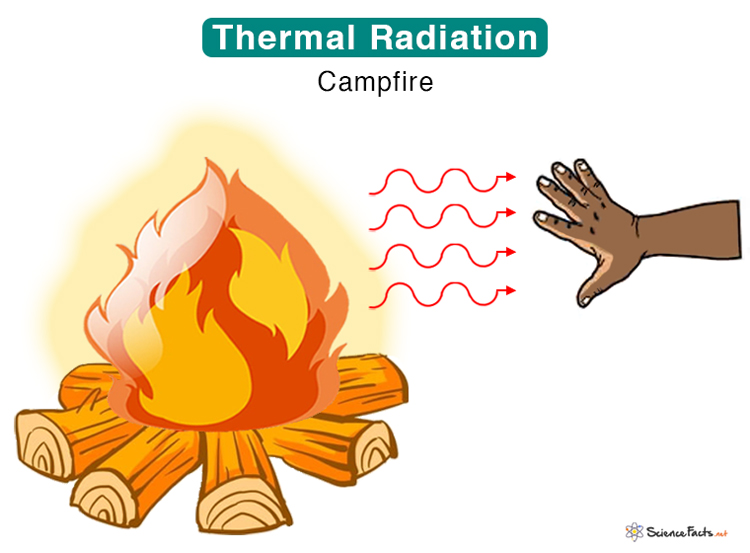Thermal radiation does not require any medium to propagate and can travel through a vacuum. This property makes thermal radiation unique compared to conduction and convection. However, it can be dangerous because the heating effect can cause burns and damage the skin.
Examples
Planck-Einstein Relation
Thermal Radiation Equations
The Sun emits thermal radiation, which we perceive as warmthAn electric stove emits thermal radiation, which cooks foodA campfire emits thermal radiation, which we receive as heatA candle radiates heat. The color of its flame depends on the temperature
E = hν = hc/λ Where h is known as Planck’s constant. P/A = σT4 Where P: Power A: Surface area σ: Stephan-Boltzmann constant T: Temperature The radiative power depends on the nature of the emitting substance. Usually, blackened substances are good emitters and absorbers. A substance that absorbs all radiation falling in it is called a blackbody.
Wien’s Law
Wien’s law or Wien’s displacement law is another law that can quantify thermal radiation. It determines the wavelength at which the radiation is at its peak. Mathematically, this law is given by λmax T = 2.9 x 10-3 m·K Where λ is the wavelength in meters, and T is the temperature in Kelvin. It can be seen that the maximum wavelength of radiation is inversely proportional to the temperature of the blackbody. Thermal radiation gets its name because the amount of radiation, and its corresponding, spectrum depends on the temperature of the emitting body.
